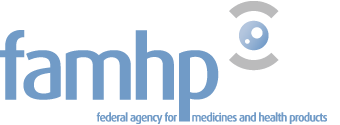European Medicines Agency (EMEA) makes recommendations to minimise risk of nephrogenic systemic fibrosis with gadolinium-containing contrast agents.In Belgium, they are marketed under the following names: Dotarem, Gadovist, Magnegita, Magnevist, Multihance, Omniscan, Optimark, Prohance et Vasovist.
The European Medicines Agency (EMEA) has adopted a set of recommendations aimed at minimising the risk of nephrogenic systemic fibrosis (NSF) with gadolinium-containing contrast agents in patients at risk of developing the condition.
Gadolinium-containing contrast agents are used in patients undergoing magnetic resonance imaging (MRI) or magnetic resonance angiography (MRA) scans. The Agency’s Committee for Medicinal Products for Human Use (CHMP) reviewed these agents because of the association between the use of gadolinium-containing contrast agents and NSF, a rare, serious and sometimes life-threatening condition that is characterised by formation of connective tissues in the skin, joints, muscles and internal organs, in patients with severe kidney problems.
Because the risk of developing NSF depends on the type of gadolinium-containing contrast agent used, the active substances are classified into three categories of risk (high-, medium-, and low-risk groups). The CHMP’s recommendations for the different agents vary according to their risk classification.
For high-risk gadolinium-containing contrast agents (Optimark, Omniscan, Magnevist, Magnegita and Gado-MRT ratiopharm, this product is neither authorised nor marketed in Belgium) the Committee recommended contraindications in patients with severe kidney problems, in patients who are scheduled for or have recently received a liver transplant and in newborn babies up to four weeks of age.To minimise the risk of using these high-risk agents in patients with unknown kidney problems, the CHMP advised that all patients should be screened for kidney problems using laboratory tests before use. The CHMP also recommended that women should discontinue breastfeeding for at least 24 hours after a scan.
For medium- (Vasovist ,Primovist – authorised but not marketed in Belgium and MultiHance) and low-risk agents (Dotarem, ProHance and Gadovist), the CHMP recommended adding new warnings in the prescribing information concerning their use in patients with severe kidney problems and patients receiving a liver transplant.The CHMP recommended that all patients should be screened for kidney problems using laboratory tests before receiving these gadolinium-containing contrast agents and that the decision to continue or suspend breastfeeding for at least 24 hours after a scan should be taken by the doctor and the mother.
The CHMP recommended that the prescribing information of all gadolinium-containing contrast agents should include:
- a warning that the elderly may be at particular risk of NSF due to impaired ability of their kidneys to clear gadolinium from the body;
- a statement that there is no evidence to support the initiation of haemodialysis to prevent or treat NSF in patients not already undergoing haemodialysis
- a statement that the type and dose of contrast agent used should be recorded.
Based on currently available data, and with these risk minimisation measures in place, the CHMP considers that the balance of benefits and risks of these agents is acceptable.
Finally, the CHMP recommended that further studies should be carried out on the long-term retention of gadolinium in human tissues.
European Commission decisions on this opinion will be issued in due course.
Notes:
1.The CHMP recognised that within the high risk group the risk of NSF with Omniscan and OptiMARK appears higher than with Magnevist based on physicochemical properties, studies in animals and the number of cases of NSF reported worldwide. However as the risk with Magnevist remains substantially higher than the NSF risk with the medium and low risk contrast agents, the CHMP recommended that Magnevist should be retained in the high risk group and be subject to the same risk minimisation measures.
2.More information is available in a question-and-answer document.
3. The procedure was carried out under Article 31 of Directive 2001/83/EC as amended, for nationally authorised gadolinium-containing agents, and under Article 20 of Regulation (EC) No 726/2004 for centrally authorised agents. This type of procedure may be initiated in specific cases where the interest of the Community is involved. The expression ‘Community interest’ has a broad meaning but it refers particularly to the interests of the public health in the Community, for example following concerns related to the quality, efficacy and/or safety of a medicinal product or new pharmacovigilance information.
4. Gadolinium-containing contrast agents are: gadoversetamide (OptiMARK), gadodiamide (Omniscan), gadofosveset (Vasovist), gadoxetic acid (Primovist – authorised but not marketed in Belgium), gadobenic acid (MultiHance), gadopentetic acid (Magnevist, Magnegita and Gado-MRT-ratiopharm –this product is neither authorised nor marketed in Belgium), gadobutrol (Gadovist), gadoteric acid (Dotarem), gadoteridol (ProHance). Most of gadolinium-containing medicines are authorised nationally. OptiMARK and Vasovist are authorised centrally.
5. A public statement on the association between gadolinium-containing contrast agents and the NSF was published in February 2007.
6. This press release, together with other information on the work of the European Medicines Agency, can be found on the Agency website.

